QuestionI have two Leo's. I've had them for approx 3 months now and I have noticed one of them is extremely thin, does not always shed all it's skin and has trouble passing waste, my other gecko has a thinnish tale but is otherwise very healthy. I'm just wondering if I'm doing something wrong with being a novice Leo keeper. I'm just a little concerned and am open to all suggestions thanks.
AnswerHi Danielle,
My first thought is you have two males. They will be so busy trying to bully each other (and fight) that they are not eating properly...this can also happen with two females. Best is to separate them. If you have two males, they MUST be separated or they will end up killing each other.
They may also have internal parasites. You need a vet to run a fecal sample to properly diagnose and treat. Links to finding a vet are in the care sheet below.
On the shedding issue.....
You can try giving your leo a shallow bath(water temperature 88-90 degrees, and no deeper than his elbows when he is laying down)...you can also try misting him, or dribbling some over his head while in the tub. Once you have soaked him and misted him, you can take a cotton swab that is moist and very very gently rub the shed off. If it does not come off easily, don't force it. For any area that is not near the nose, you can also rub a tiny amount of Vaseline into the area, especially the toes.
If you are using a humid hide already,This time of year, depending on where you live, most homes are running air conditioners which remove humidity from the home which can cause the humidity level to drop too much in the leos tank, adding to the problem especially if they aren't provided with a humid hide, or if the humid hide is drying out too much.
On the trouble passing waste: the internal parasites can cause this problem. Also, dehydration....make sure your leo is drinking..either by licking water drops from a spray bottle, from a dish or if needed, an eye dropper. Just a drop at a time on their mouth will cause them to lick at the water.
Also, a slight blockage from using sand in their tank can cause the problem. If you are using sand or other loose substrate, remove it..see info below.
BASIC CARE FOR A LEOPARD GECKO
Leopards are pretty easy to care for but they do need
special care. Here are some of the basic needs of your gecko.
HOUSING: The need to have at least a 20 gallon long tank for one Leo. This needs to have a secure fitting screen top...they can be quite the escape artists!!! They need to have a humid hide box.You can make this with something as simple as a small plastic dish with a hole cut in one side and a small mesh bag filled with some Sphagnum moss coconut bark or Peat moss that you mist.
I made mine out of the small plastic folgers coffee containers...I cut an opening in the lid..and put the moss in..they LOVE it. I use the terrarium moss in mine.
I use that on the warm side of the tank. Be sure to provide a cool hidebox on the other end. I also provide a mid temperature hide...which is in the middle of the tank.I use the critter caves which you can purchase. NOT the ones that have heat in them!!!!
Provide secure climbing areas for your gecko. Fake plants, rocks and branches are all fine to use. be sure there are no wires or sharp ends to any fake plants you use.
*****SUBSTRATE:(that's the stuff on the floor of your tank) Newspaper, lizard carpet or paper towels work great and are easy to clean and are much safer than any loose substrate. Sand or other loose substrate is not recommended as that they can be deadly to the leo when it is ingested(eaten, even by accident while eating their insects)...A very graphic site of an impacted leo surg can be seen at http://homepage.mac.com/exoticdvm/reptile/PhotoAlbum181.html it is very graphic!!! ******What I have found that works great for safety and heat distribution is using about 1/4 inch of children's play sand(since the tiles fit tight together, there is no sand danger) on the bottom of the tank and on top that you place ceramic or slate floor tile. What is nice is that the 12 x 12 squares fit perfect in a 20 gallon tank with no spaces between the tiles. The sand and the tile distribute the heat wonderfully. Using the under tank heater as described is what distributes the heat. Also, overhead heat will help in heating the tiles...I've been using this set up for several years and the leos love it. Using a tile that isn't smooth is recommended. **********
TEMPERATURES: They need a warm area of 88-92 degrees and a
cooler area in the upper 70s, low 80s. At night their temperature can drop to the low to mid 70's.
Never use a hot rock for a leopard gecko...or any reptile.
They can severely burn any reptile. You can use a heating
pad under the tank,under tank heater, or you can use a regular household lightbulb in a dome fixture with a ceramic socket in it to keep the warm area at the 88-92 degree area.At night, no white light. If room temperatures stay above 70 degrees, no extra night heat is needed. The undertank heater or heating pad should cover about 1/3 of the tank....be sure to raise the tank up about 1/4-1/2 inch off the stand when using an undertank heat source to prevent heat build up which can cause the glass to break and hot spots in the glass. Be sure to have a good layer of newspaper, carpeting or, even a thin flat rock(such as tile) on top the area that the undertank heat source is placed...if you use a thin rock or tile, it helps to distribute the heat very well.
You can use the special nighttime lights that are designed for reptiles. I like using a ceramic heat emitter on a thermostat for nighttime heat.
DO NOT use black lights or party lights as they can cause eye damage!!!!
The wattage you use will vary based on room temperature and size of tank.
LIGHTING: Leopard geckos do not need UVB lighting but it does not hurt them to give them uvb. They should have some type of light during the day, be it a uvb tube, regular florescent light, reptile day light or regular household lightbulb. NO white lights at night!!!
FEEDING: Geckos should not be fed crickets or other insects that are bigger than the space between their eyes. Generally, hatchlings can be fed more than once a day,juvys can be fed twice a day, adults are fed once daily or every other day, in the early evening. Crickets and other food items such as silk worms, super, and an occasional treat of a wax worm, need to be dusted with a calcium supplement two times a week and also they should have a small dish of calcium in their tank. I use the lid of a milk jug for the little dish of calcium in their tank. For dusting the insects, Use a calcium with no added phosphorus. Insects must be gut loaded(fed) for at least 48 hours prior to feeding your gecko. Remove any uneaten crix or superworms after 15-20 minutes..... Place a piece of cut potato in the tank so that if you have missed any uneaten insects, they will eat the potato instead of nibbling on your gecko!!!
*************You have to be sure to feed your crickets and insects the right foods before feeding them to your gecko. If your crickets/insects are not healthy and well fed, your gecko will not get the nutrition he needs. You can gut load your crickets and insects greens, veggies, cereals or specially designed commercial foods for crickets or the insects you are feeding. ************
Be sure to have a small dish of clean water for your gecko at all times!!
You can offer them some baby food or fruits on occasion ...
Mine will even eat a small piece of watermelon now and then.WATER: always provide a dish of drinking water. If you choose to mist your gecko to drink, its best to not get the tank too wet as that they do not do well with higher humidity. Sometimes its better to take your leo out of their tank to mist them to get them to drink!!!
HANDLING: Some geckos enjoy being held...others prefer not to be handled at all. Be sure to be very gentle when holding your leo and NEVER grab them by the tail! Their tails are extremely fragile and will break.
I do suggest finding a vet that can treat reptiles BEFORE you actually need one!!! To find a vet that is able to care for reptiles:
http://www.anapsid.org/vets
http://www.arav.org/Directory.htm
For more information on leopard geckos:
http://www.thegeckospot.com/leocareindex2.html
http://www.drgecko.com
If you have any questions or don't understand something, please let me know.

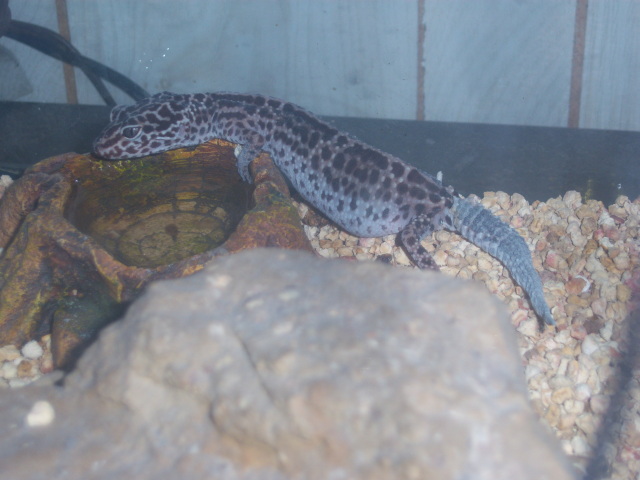 african fat tailed leopard gecko
QuestionQUESTION: My son got Lizzie from my aunt after
african fat tailed leopard gecko
QuestionQUESTION: My son got Lizzie from my aunt after
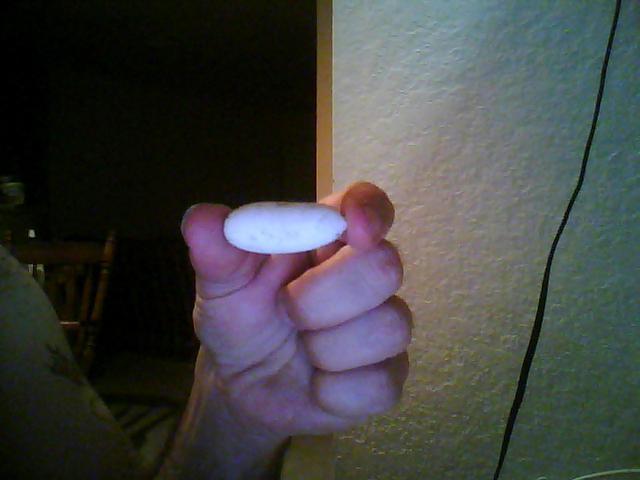 Reptile Egg Identification
QuestionReptile Egg
QUESTION: I dont know if you
Reptile Egg Identification
QuestionReptile Egg
QUESTION: I dont know if you
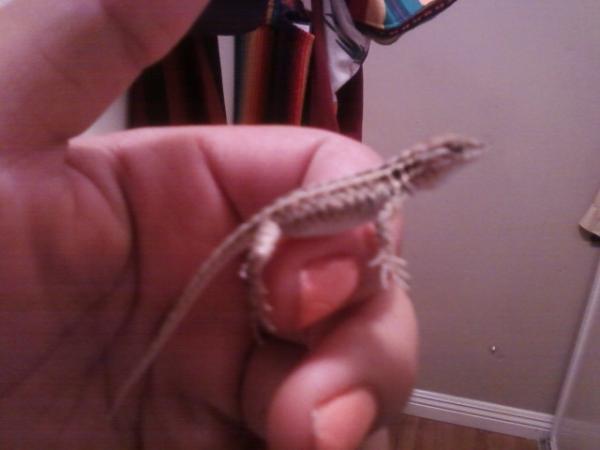 about a baby gecko
Question
the little 1
hi,i really need your help i am w
about a baby gecko
Question
the little 1
hi,i really need your help i am w
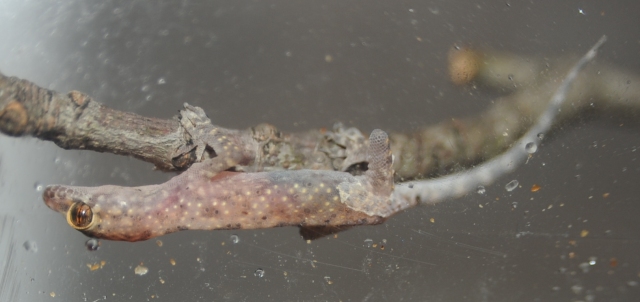 Anole or Gecko ID (found in car after trip to AZ/TX
Question
Hitchhiker named JR
Hi Bryan,
About a month
Anole or Gecko ID (found in car after trip to AZ/TX
Question
Hitchhiker named JR
Hi Bryan,
About a month
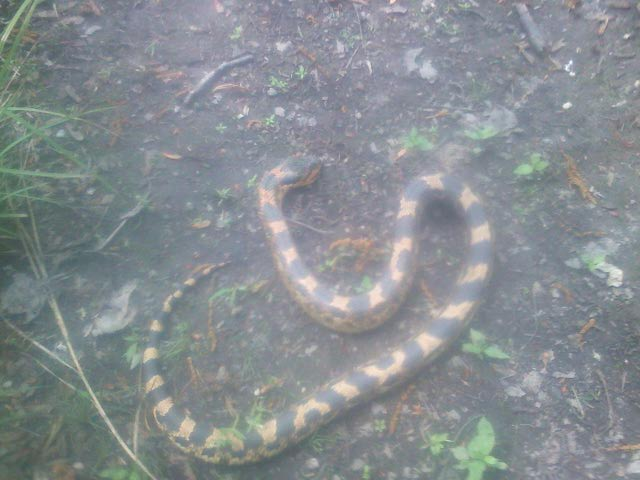 What kind of snake is this?
Question
Snake
Hello,
I live in Southern Maryla
What kind of snake is this?
Question
Snake
Hello,
I live in Southern Maryla